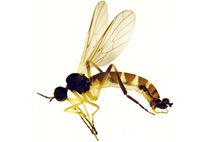Abstract
The German naturalist Carl Hermann Conrad Burmeister (1807–1892) had a prolific scientific career, spanning multiple taxa from diverse insect groups and trilobites to temnospondyls, birds, and extant and fossil mammals (see Berg, 1895). His contributions to anuran taxonomy are concentrated in two books, “Erläuterungen zur Fauna Brasiliensis…” (Burmeister, 1856) and “Reise durch die La Plata-Staaten…” (Burmeister, 1861). The latter is an account of his travels in Argentina and Uruguay from 1857–1860 and includes descriptions of three new species of frogs: Leiuperus nebulosus, Cystignathus mystacinus, and Hyla leucotaenia. While the first two names currently designate valid species, with the combinations Pleurodema nebulosum and Leptodactylus mystacinus respectively, the last name has had a more complex taxonomic history. It involves confusions involving a homonym, its consideration as a junior synonym of Hypsiboas pulchellus (Duméril & Bibron, 1841)—a widely distributed species in eastern Argentina, southeastern Brazil, and Uruguay (Frost, 2014)—and its actual identity corresponding to another widespread species in the same geographic area, with which it has never before been associated: Scinax squalirostris (A. Lutz, 1925). All these issues are discussed in this paper.

